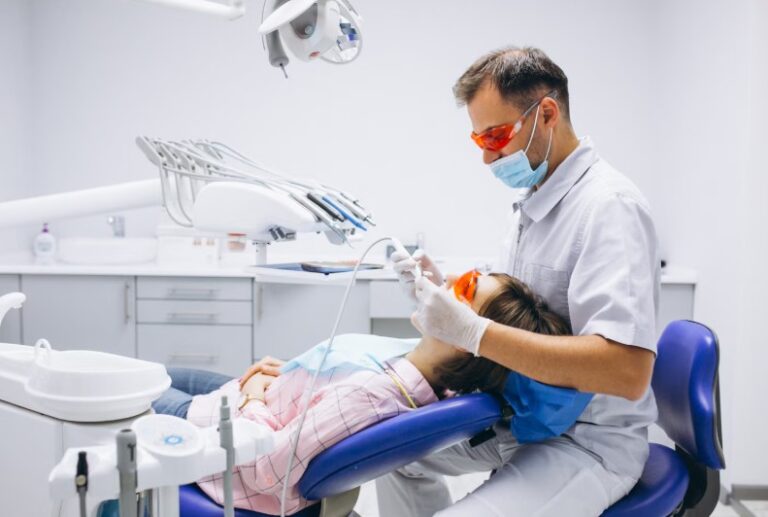
Have you noticed that your teeth aren’t as straight as you’d like them to be? You’re not alone. Misaligned teeth, commonly known as malocclusion, affect millions worldwide. These imperfections in alignment can range from slightly crooked teeth to severe cases where the bite is significantly off. This blog post will explore how misaligned teeth can impact oral health and overall well-being.
Understanding the Impact of Misaligned Teeth on Oral Health
Misaligned teeth make cleaning difficult, leading to plaque buildup and eventually tooth decay. When your teeth don’t align properly, accessing all the nooks and crannies with a toothbrush or floss can be tricky. This increases the risk of cavities, even for those who brush and floss regularly.
Gum disease is another potential consequence. Misalignment allows plaque to accumulate along the gum line, causing inflammation and infection. Gum disease can lead to tooth loss if left untreated, impacting both oral and overall health.
Furthermore, misaligned teeth can cause uneven wear and tear. When teeth don’t meet correctly, some areas will bear more pressure, leading to chipped teeth, jaw pain, and even headaches. Addressing bracket placement and alignment early on can help prevent these issues.
Exploring the Psychological and Social Impact of Misaligned Teeth
Living with misaligned teeth can take a significant toll on self-esteem and confidence. Many people feel embarrassed about their smiles, leading them to hide their teeth or avoid social situations altogether. This lack of confidence can affect personal and professional relationships.
Social interactions often involve laughter and smiling, and when someone feels self-conscious about their teeth, it can hinder their ability to express joy freely. This can lead to feelings of isolation and anxiety, highlighting the importance of addressing dental issues not just for physical health but for mental well-being as well.
The psychological impact extends beyond the individual. Parents may feel guilty or concerned about their children’s dental issues, adding stress to family dynamics. Understanding the comprehensive effects of misaligned teeth can prompt timely interventions.
Treatment Options for Misaligned Teeth
Fortunately, there are several treatment options available to correct misaligned teeth. Traditional orthodontics is a time-tested solution, which involves bracket placement on each tooth, connected by wires to gradually move teeth into proper alignment. While effective, they can be uncomfortable and require regular adjustments.
Clear aligners offer a modern twist on orthodontics. These custom-made, removable trays fit snugly over the teeth, applying gentle pressure to shift them into place. They’re less noticeable than braces and can be removed for eating and cleaning, making them a popular choice.
For minor misalignments, veneers or bonding can provide a cosmetic solution. These treatments involve covering the front surface of the teeth with a thin layer of material to improve appearance. However, they don’t address underlying alignment issues.
Steps to Prevent Misalignment in Children and Adults
Preventing misalignment starts with good oral hygiene practices. Regular dental check-ups are crucial, as they allow dentists to monitor tooth development and catch potential issues early. Brushing twice a day and flossing daily can help maintain healthy teeth and gums.
For children, discouraging habits like thumb sucking and ensuring timely orthodontic evaluations can prevent future problems. Early intervention can guide teeth into proper alignment before permanent teeth come in.
Adults should avoid habits that can exacerbate misalignment, like grinding or clenching teeth. Using a mouthguard at night can protect teeth from damage. Additionally, being mindful of diet and avoiding excessive sugar can help maintain oral health.
Also Read: Comprehensive Dental Care for Your Loved Ones: Advantages of Family Dentistry
Conclusion
Misaligned teeth are not just a cosmetic concern; they can significantly impact oral health, psychological well-being, and self-esteem. The consequences range from an increased risk of cavities and gum disease to diminished confidence, affecting various aspects of life. Fortunately, there are numerous treatment options available, along with preventive measures to help minimize misalignment.






